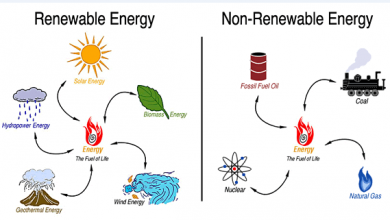Magnetic materials
The magnetic materials are those that naturally possess properties of attraction or repulsion over other materials. This force, known as magnetism or magnetic force, is one of the two components of electromagnetic radiation and is produced by the particular alignment of electrons in matter, generating a magnetic field called a dipole (with a positive and a negative pole).
Types of magnetic materials
Several types of magnetic material are known, each with a particular response to stimuli from a magnetic field, and they are:
- Diamagnetic. These materials repel magnetic fields through low-intensity forces that, eventually, can be conquered temporarily.
- Paramagnetic. Materials capable of responding to the action of a magnet, being attracted to, but unable to be permanently magnetized. If it is removed from the magnetic field, the properties simply disappear.
- Ferromagnetic. Strongly magnetic materials, linked to iron and other metals, that under normal conditions respond to a magnet and generate their own magnetic field for a time. However, when carried above the Curie Temperature, they become paramagnetic.
- Ferrimagnetic. Usually derived from ferrite and ceramic type, these materials are susceptible to the permanent magnetization of saturation, such as ferromagnetic, as long as they are below the Curie temperature, but with much less intensity.
- Superparamagnetic. Ferromagnetic materials that are in suspension in a dielectric matrix and therefore retain some characteristics of ferromagnetic and others of paramagnetic.
- Ferrites. Provided with low electrical conductivity, these ceramic materials are very powerful magnets that store magnetic forces much more than even iron.
- Non-magnetic. Materials that do not affect the lines of a magnetic field at all, that is, do not respond to magnetism in any way.
- Antiferromagnetic. Materials that reject magnetization even under the effect of an induced magnetic field, however powerful it is.
Finally, it should be noted that practically all matter responds in some way to the presence of magnetic forces, only that it does not do so in the same way or with the same degree of sensitivity.
Examples of magnetic materials
- Iron (Fe). The ferromagnetic material par excellence, iron, is an extremely abundant transition metal on the planet, second only to aluminum. The very core of the Earth is made of this metal in a liquid state and, precisely, it is its movement that generates the magnetic poles of the planet that serve the compasses for their operation.
- Cobalt (Co). Bluish white metal with ferromagnetic properties, it is usually found next to nickel, both in the earth and in iron meteorites. It presents numerous oxidation states, which allow it to constitute various metallic compounds that, at low temperatures, are instead shown as antiferromagnetic agents: CoO and Co 3 O 4.
- Nickel (Ni). Transition metal of yellowish-white color, it is very ductile and malleable and a great conductor of electricity and heat, so it is not surprising that it is ferromagnetic at room temperature. In many cases, it shares characteristics with iron and is, after it, the most abundant metal on Earth. However, it is much more resistant to corrosion than iron.
- Bismuth (Bi). As rare as silver, this metallic chemical element is one of the most strongly diamagnetic (resistant to magnetization) that exists, is a poor conductor of electricity and heat, and in a magnetic field can increase its electrical resistance, thus serving to measure the intensity of the forces in that field.
- Germanium (Ge). This semi-metal of grayish-white colors, resistant to acids and alkalis, has the same crystalline structure as diamond. Since its properties are considered intermediate between metals and nonmetals, this element is diamagnetic, despite being a semiconductor of electricity.
- It is one of the forms of appearance of carbon (along with coal, diamond, and fullerenes). It is black, shiny, poorly conductive of electricity, and therefore diamagnetic, as it operates as a semiconductor at best.
- The noble gases (halogens). A set of elements in the periodic table that have very low reactivity with any other substance are called “ noble gases ”, which is why they are often called “ inert ”. Helium, Argon, Krypton, Neon, and others are examples of this. In the presence of magnetism, therefore, they are equally resistant, that is, diamagnetic.
- Magnesium (Mg). Although it is not found in free form in nature, as part of other compounds, elemental magnesium is a light, insoluble, silver-white, and highly flammable metal that has paramagnetic properties: it responds to magnetism but if it moves away from the magnet it loses immediately its magnetic properties .
- Ferrite. As we said before, ferrite is a ceramic material that responds very strongly to magnetic fields, even more than iron, allowing its use to magnetize other materials and produce, for example, magnets .
- Mild steel. Steel is an alloy of iron with other metallic (such as nickel, cobalt, or copper) or non-metallic elements (such as carbon or sulfur), and therefore retains many of its properties, depending on the percentage of mixture that exhibit. In the case of “soft”, it contains carbon levels between 0.15 and 0.25%, that is, almost pure iron, retaining many of its ferromagnetic properties.
It can serve you: Examples of Natural and Artificial Materials

